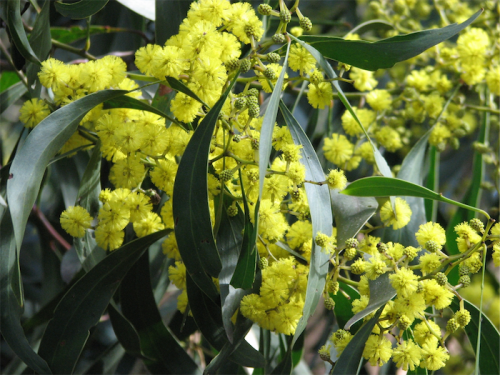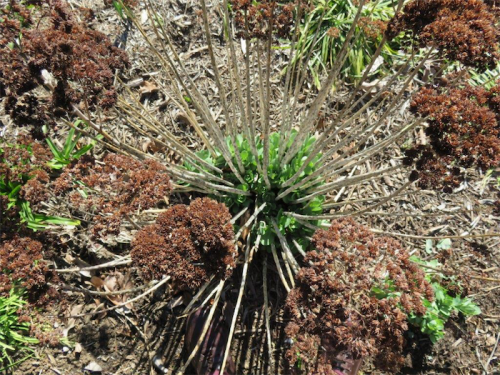
WATTLES, bursting out all over, are heralding the arrival of spring.
And it’s an ideal time to wander the wattles at the Botanic Gardens. Be sure to call at the visitor information centre and collect the all-important “In Flower This Week” leaflet.

Possibly our most important wattle is Acacia pycnantha, declared Australia’s national flower in the bicentenary year, 1988. It was first recorded by explorer Thomas Mitchell, who collected specimens in northern Victoria. George Bentham wrote the first species description in 1842.
While our national flower, it’s considered a weed in many other countries including Italy, South Africa, Portugal, Indonesia and NZ.
Other wattles in flower at the gardens include Acacia amoena, which is covered in small golden balls of yellow flowers. It is native to NSW and Victoria.
Blayana has similar flowers, being found only in the Wadbilliga National Park near Bega.
Boormanii, or Snowy River Wattle, has different foliage to most wattles with fine, needle-like foliage growing into a multi-stemmed copse. There are at least a dozen other varieties in flower at the gardens.
In containers near the visitor’s centre is Crowea exalata, a perfect pot specimen for a sunny balcony, which forms a mounded bush of fine green foliage with distinctive red stems and a profusion of pink, star-like flowers.

One example, shown here, is a firm favourite in British and European gardens and becoming equally so here – Sedum “Autumn Joy”.
It’s so easy to grow and, at the end of its flowering time, in autumn can be divided to fill in bare spots in garden beds. The bright-pink flowers finish about April/May, but I leave the dried flower heads on the end of its long stalks for winter interest. They are also perfect for floral arrangements.
The stalks now need to be cut to ground level as the new, bright-green shoots are clearly visible. I would expect, after dividing, to get at least 10 extra plants. However, they can be tough to divide; use a sharp knife. In some cases, I’ve resorted to using a tomahawk!
Other perennials that need trimming to ground level at this time include Echinacea, Salvia, Asters (Michaelmas daisies) and Gaura.
Many perennials are putting on huge spurts of growth, which means it is feeding time. Remember to feed the plants, not the soil. Don’t waste plant food by scattering it far and wide on bare ground and keeping the plant food from the stems of plants.
Always use certified organic fertilisers that won’t kill other inhabitants of the soil, especially earthworms, whose importance in the garden is so vital. Here’s a thought: “In any hectare of land, the weight of earthworms will be greater than the cattle or sheep grazing above it”, reports the University of California.
Jottings…
- While gardens haven’t needed to be watered for months, potted plants dry out quite quickly, especially those under eaves for frost protection. Keep up the watering for them.
- Start mulching the whole garden now. I recommend Canberra Sand and Gravel’s Organic Mulch to 100mm deep.
- Mulch may have compacted with rain over winter. Lightly fluff it up with a hoe while weeding at the same time.
- The Bowral Home and Garden Show, with more than 150 exhibitors, will be held at the Bong Bong Racecourse, 10am-4pm, September 10-11. Admission is $10. More information at homeandgardenshow.com.au
Who can be trusted?
In a world of spin and confusion, there’s never been a more important time to support independent journalism in Canberra.
If you trust our work online and want to enforce the power of independent voices, I invite you to make a small contribution.
Every dollar of support is invested back into our journalism to help keep citynews.com.au strong and free.
Thank you,
Ian Meikle, editor




Leave a Reply